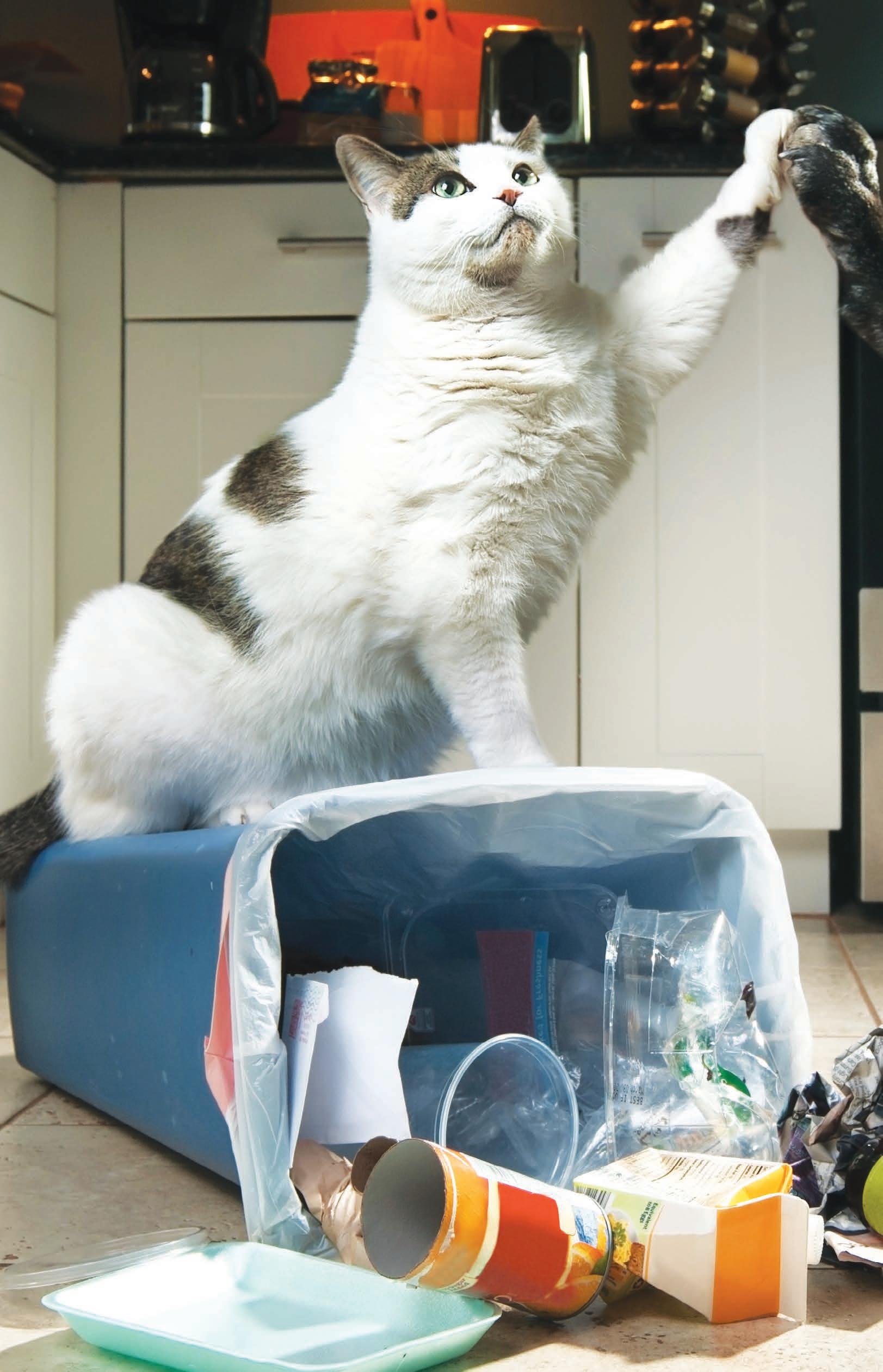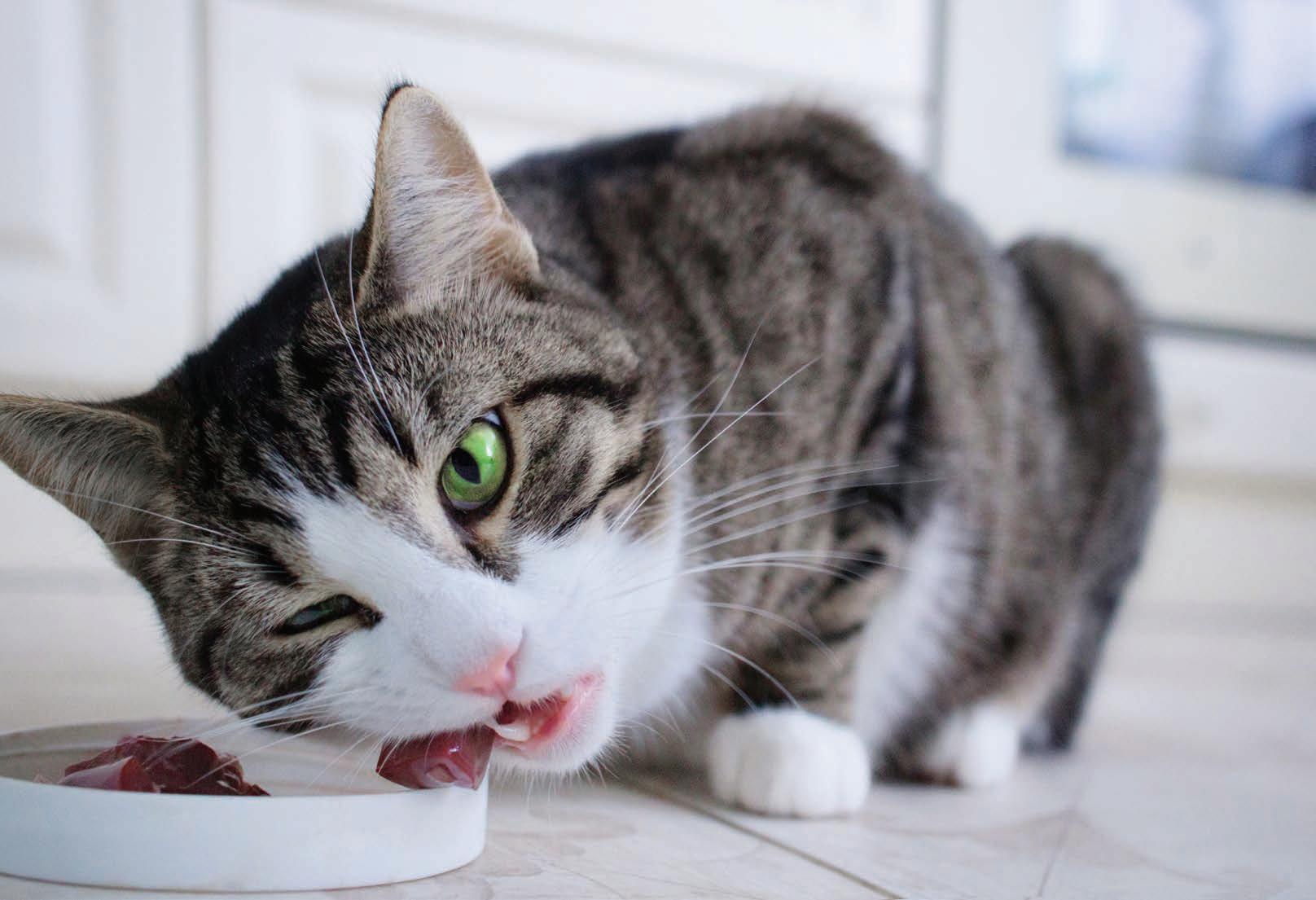
6 minute read
Dispelling Animal Urban Myths

©ISTOCKPHOTO.COM/PBROYLE378
Dispelling Animal Urban Myths By Lillian M. Roberts, DVM Country Club Animal Clinic
Advertisement
Ever wonder if there’s any truth to all those old sayings you’ve heard for years about assessing the health of your pet? We’ve all heard them— maybe even repeated them—and many people base their first-line pet care on these old adages. But are they really true? Veterinarians have heard them all, and here we put to rest just a few of the most common misconceptions.

©ISTOCKPHOTO.COM/PBROYLE378
MYTH: An animal won’t eat anything that’s bad for them.
This is no more true for them than it is for us! If it were, pets would never eat chocolate, house plants, poison, or articles of clothing … let alone rocks and dirt. Our pets depend on us to provide them a healthy, balanced diet and to keep unhealthy but attractive foods out of reach. Generally speaking, if it’s bad for you, it’s bad for them. And in a few cases, even things that are good for you can be deadly for them.

©ISTOCKPHOTO.COM/MDURSON
MYTH: If the dog’s nose is warm, it means they are sick/have a fever.
In truth, it just means the nose is warm. This might happen when the dog is excited, has been exercising, or is in a warm environment. Likewise, having a cold or wet nose is not necessarily a sign of health.

©ISTOCKPHOTO.COM/VERAOSCO
MYTH: If they are still eating, they must not be experiencing tooth pain.
Both dogs and cats usually find a way to eat, even if every tooth in their mouth hurts. Sometimes they won’t chew their food if it hurts to do so, or they will chew very carefully. If only one side hurts, they will chew on the opposite side. The instinct to survive (i.e., eat) will overtake pain in almost every case.

©ISTOCKPHOTO.COM/CHALABALA
MYTH: When a cat purrs, it means she’s happy.
Cats do purr when they are content, but also sometimes when they are nervous or apprehensive. Experts believe this helps them to calm themselves. It calms humans, so it stands to reason it would calm the cat!

©ISTOCKPHOTO.COM/GRASE
MYTH: A dog’s saliva has healing properties, that’s why they lick their wounds.
This is partly true. Dogs (and cats) tend to lick their wounds the same way you might rub or pick at yours—because it feels abnormal and attracts their attention. It may even feel good at that moment to lick the wound, but in many cases, it’s only making things worse. It’s harder for an injury to heal if it’s constantly being aggravated. Still, it turns out there really are some healing properties in saliva—when dogs were evolving, this was probably a life-saving development. But these days, we have faster, safer, and more reliable ways to heal wounds.

©ISTOCKPHOTO.COM/VADIMMMUS
MYTH: Spaying or neutering a dog makes it gain weight.
Pets gain weight when they eat more calories than they burn. An altered pet may be calmer, with a slower metabolism, thereby requiring less food to maintain a healthy weight. They also lose the influence of certain hormones that may play a role in maintaining muscle mass. However, desexing is only one factor in the rising incidence of obesity in pets!

©ISTOCKPHOTO.COM/EVGHENIA TIBA
MYTH: Fish is a natural part of a cat’s diet.
It’s true that cats usually love fish and seafood. But the wild ancestors of our housecats probably never tasted fish at all—try to picture a cat, out in the ocean, trying to catch their dinner. It’s illogical! Because fish aren’t a natural part of a cat’s diet, very often if a cat has chronic indigestion, the first thing we suggest is to stop feeding them fish, and they often improve. However, that’s not to say that a normal, healthy cat can’t indulge … if your cat loves fish and it doesn’t cause stomach upset, let him have it!

MYTH: If an indoor cat doesn’t act sick, there’s no reason to see the vet.
While it’s true that indoor cats don’t need “yearly shots” as adults, they still need to go in for an examination periodically. This is our chance to check the mouth for dental problems, listen to the heart, record their body weight (and discuss diet if needed!), and maintain a record of their overall health. As time goes by, we might test for certain conditions—early detection can save a life. Since cats don’t usually alert you when they’re feeling sick, maintaining an objective record of their health over time can make a huge difference in their health later in life.

MYTH: Garlic and yeast are natural flea repellants.
This one actually has a small kernel of truth in it. Garlic, in particular, alters body odor, which is what attracts parasites such as fleas. So feeding garlic may make a pet less attractive than other potential victims to any fleas in the area. But if yours is the only pet in the house, you can count on the fleas attacking him sooner or later.

MYTH: Grain-free diets are the best option for my pets.
While this is often true for cats, who don’t actually require any carbohydrates in their diet, the truth is less clear for dogs. The recent fad promoting grain-free and gluten-free diets for dogs is not based on nutrition research but rather is a carryover from similar fads in human diets. But while most humans eat a wide variety of foods, most house pets are fed one food, day in and day out. So if the food they eat contains too little (or too much) of an essential nutrient, eventually problems will arise. For example, there has been a recent spate of a rare, severe heart disease in dogs eating grain-free diets. This is not specific to one particular diet, and it’s not clear which nutrient(s) may be lacking. So it may not be the grain-free aspect that is the problem but rather a lack of overall quality control at the manufacturer.

MYTH: Dogs, cats, and especially exotic pets like birds are basically wild animals and can fend for themselves.
No, no, no! While it’s true that some former pet cats, exotic birds, and snakes have reverted to a feral state when “set free” by irresponsible owners, most actually die a horrible death from starvation or attack by a predator. And those that do survive wreak havoc on the local ecosystem, sometimes posing a serious health risk to humans. It’s never a good idea to “set an animal free,” no matter what the species or location.
So now you know that those so-called “facts” we hear about assessing a pet’s health are frequently inaccurate and not based on any science whatsoever. As always, consult your veterinarian for the real truth about taking the best possible care of your pet.
Lillian Roberts, DVM, is the owner of Country Club Animal Clinic, which is located at 36869 Cook Street in Palm Desert. (760) 776-7555 countryclubdvm.com



